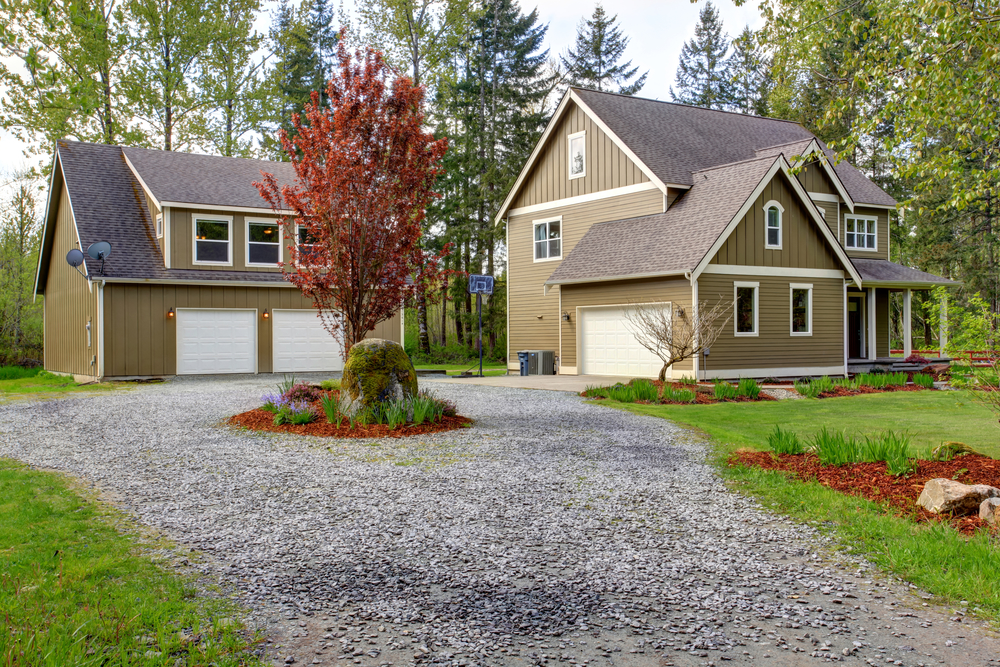
Most people want to have a nice driveway, or at least one that is serviceable. Your driveway is the first part of the house you will be seeing in many cases, and a bad-looking one will make the house less attractive. It will affect the house’s curb appeal and how much you can sell the house for. Also, you might want to use the driveway for other things, like working on your vehicle, or other projects. All of this will affect which type of material you should be considering for your driveway. Here are some of the pros and cons of common driveway materials.
Asphalt
Let’s start with the most common material, asphalt. Asphalt is the most popular option for several reasons. First of all, it is cheap and versatile. It can deal with virtually any type of climate since it is made from petroleum. This makes it much more flexible than something like concrete, for instance. If it cracks, it can easily be repaired. You don’t even need to call a professional to do it either. It can also expand and contract without cracking, which makes it a great option for areas that see a lot of contrast between winter and summer temperatures.
One of the drawbacks of asphalt is that the design options are not interesting. Asphalt will look like asphalt no matter what. Some people may want something more attractive for their driveway and might find asphalt a bit boring. It’s also not the most durable option out there, and you might have to replace your asphalt driveway as soon as 12 years after installation in some cases.
Asphalt is also not the most environmentally friendly option and does demand some maintenance. The surface will need to be sealed every single year. Asphalt can also get very hot in the summer.
Concrete
Concrete is another popular option and, in many ways, it is similar to asphalt. One area where it beats it, however, is when it comes to durability. A well-maintained concrete driveway can last anywhere from 25 to 50 years. It’s also a better-looking option than asphalt and offers more possibilities. It can be painted or stained to get something more interesting. It can also be stamped. Concrete also allows water to circulate more easily than asphalt. Asphalt will absorb some of the water which can end up damaging the underneath layer.
The biggest drawback is that while it looks better than asphalt, it’s not a material most will qualify as attractive. Another issue is that it is prone to cracking, so it will have to be designed specifically to deal with expansion and contraction. It could still end up cracking, which will be more costly and complex to repair.
Gravel
Gravel is another option that you could consider, especially if it’s for a country road. It has a very rustic look and you can use it for long driveways.
The number one benefit of gravel is how cheap it is. Installing a gravel driveway will cost you around $1 to $3 per square foot. This will depend, however, on how long the driveway is. In this case, we would suggest that you use a calculator to know how much gravel you will need. There are plenty of those online and they will allow you to get a rough estimate of how much you can expect to spend.
One of the cons of gravel driveways is that they need a lot of attention. Your driveway will need to be regraded every year or every other year. Another thing about gravel is that it doesn’t hold up well in all types of climates. While it can deal surprisingly well with water, it doesn’t react to snow or ice as well. If you regularly use a snowblower in the winter, you will have to replace more of your gravel every year because it tends to cling to ice and snow and will end up mixing with it.
So, if you are living in a warm or moderate climate, you might want to look at other options, unless you don’t mind the extra maintenance. In this case, gravel could be a viable option and one that could allow you to cut your installation costs in half compared to options like asphalt and concrete.
These are some of the pros and cons of the most common materials you’ll find on the market. Look at those closer and make the right choice depending on your needs and how much you can afford.